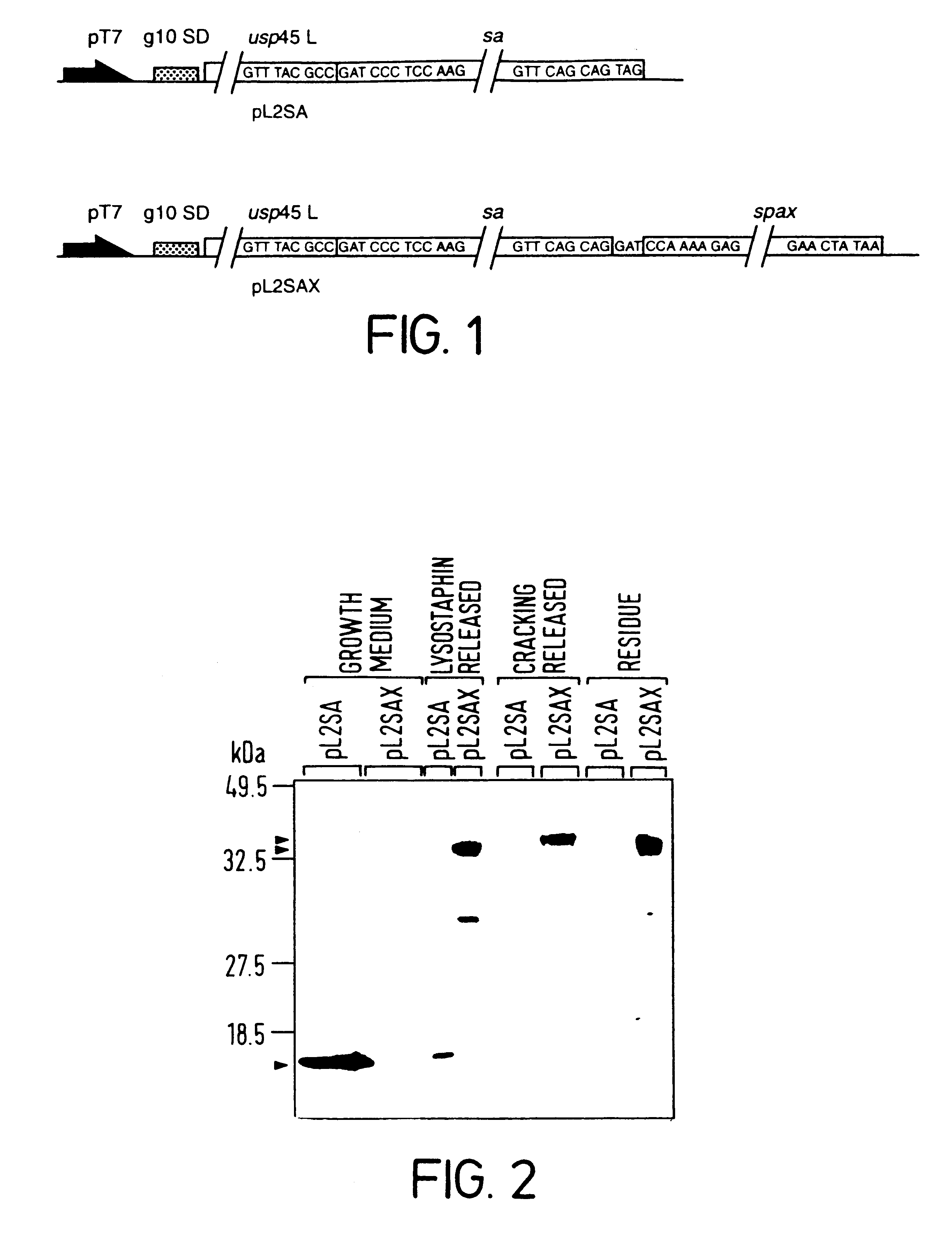Materials and methods relating to the attachment and display of substances on cell surfaces
- Summary
- Abstract
- Description
- Claims
- Application Information
AI Technical Summary
Benefits of technology
Problems solved by technology
Method used
Image
Examples
example 2
Display of Tetanus Toxin Fragment C (TTFC) Antigen on the Surface of L. lactis
This additional example provides evidence that protein antigens can be firmly attached to the surface of L. lactis by constructing chimeric genes encoding a fusion protein which contains nucleic acid encoding (1) an N-terminal secretion signal (2) the protein antigen to be surface expressed and (3) the cell wall sorting and anchoring domain of S. aureus protein A.
Stage 1: Cloning and genetic manipulation of TTFC and the S. aureus protein A anchoring domain.
(1a) Construction of pTREX and pTREX1
Synthetic oligonucleotides encoding a putative RNA stabilising sequence, a translation initiation region and a multiple cloning site for target genes were annealed by boiling 20 .mu.g of each oligonucleotide in 200 ul of 1.times.TBE, 150 mM NaCl and allowing to cool to room temperature. Annealed oligonucleotides were extended using Tfl DNA polymerase in 1.times.Tfl buffer containing 250 .mu.M deoxynucleotide triphosph...
PUM
| Property | Measurement | Unit |
|---|---|---|
| Volume | aaaaa | aaaaa |
| Composition | aaaaa | aaaaa |
| Surface | aaaaa | aaaaa |
Abstract
Description
Claims
Application Information
 Login to View More
Login to View More - R&D
- Intellectual Property
- Life Sciences
- Materials
- Tech Scout
- Unparalleled Data Quality
- Higher Quality Content
- 60% Fewer Hallucinations
Browse by: Latest US Patents, China's latest patents, Technical Efficacy Thesaurus, Application Domain, Technology Topic, Popular Technical Reports.
© 2025 PatSnap. All rights reserved.Legal|Privacy policy|Modern Slavery Act Transparency Statement|Sitemap|About US| Contact US: help@patsnap.com

